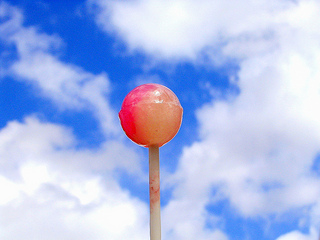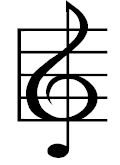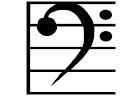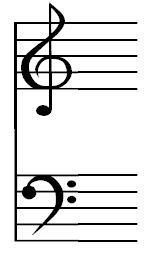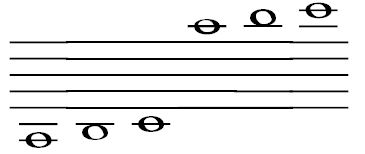Have you ever heard the phrase “It’s all Hebrew to me?” That’s what many people say when they talk about reading music. They feel like it’s a foreign language that seems so allusive and difficult to learn.
This is probably why so many people keep dragging their heels when it comes to learning how to read music. It’s similar to refusing to see a doctor for a check-up. You don’t want to go because you think it’s going to hurt. (*Sigh*)
I’m going to be your mother here and promise you that learning some common music staff symbols won’t hurt one bit. I’ll even give you a lollipop afterwards.
Now that I’ve your attention, let’s get started…
#1 – The 5 Lines and 4 Spaces in Music
The music staff consists of 5 lines and 4 spaces.
We number the lines of the staff from bottom to top representing how it is read.
The same is done for the spaces.
#2 – Music Notes
Music Notes are oval-shaped symbols that represent musical sound or pitch. They are placed on the lines and in the spaces of the staff.
A note appearing higher on the staff sounds higher in pitch.
A note that is lower on the staff will also sound lower.
The first seven letters of the alphabet (A-G) are the names of music notes.
#3 – Clef Signs
Clef Signs designate where the notes will be placed on the staff. We have two main clef signs; the treble clef and the bass clef.
1) Treble Clef
The treble clef (or G-Clef) is used for higher sounding pitches. It has evolved from a fancy letter “G” where the belly of the symbol curls around the second line of the staff.
This means the note “G” will always be found on the second line.
Notes higher than “G” can be found by moving forward through the alphabet one line or space at a time. Any note lower than “G” will move backwards through the alphabet.
2) Bass Clef
The bass clef (or F-Clef) represents the low sounds in music. Just like the treble clef, the bass clef symbol came from a stylized letter “F.”
The two dots of the clef sign surround the fourth line of the staff. This is where the note “F” can be found.
To locate any note above “F,” you move forward through the alphabet. Notes below “F” move backward through the alphabet.
#4 – Grand Staff
Putting the treble clef staff and bass clef staff together and sometimes connecting it with a brace creates the grand staff.
This is what pianists use to read music. The treble clef represents the right hand while the bass clef is the left hand.
#5 – Ledger Lines
Ledger lines are little tiny lines found above or below the staff.
The purpose of the short lines is to extend the range of the staff when notes are too low or too high to be written on the staff.
How was that?
Did it hurt? Did you feel any pain? Of course, not. Now, here’s that lollipop I promised you…